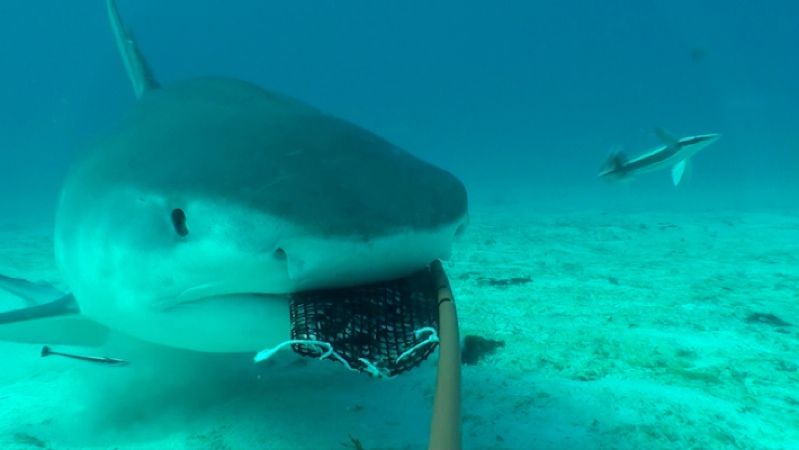Fin Count: Global Shark Census Will Aid Conservation

Researchers from across the globe recently teamed up to accomplish what might seem like an impossible (and scary) task: counting as many of the ocean's sharks as possible.
The giant shark census, dubbed the Global FinPrint, is expected to last three years and involves surveying more than 400 reef locations around the world. Researchers will use underwater cameras on the ocean floor to capture images of sharks and other animals as they pass by, and the scientists are calling on boaters, sailors and other ocean lovers to help get this equipment into position, according to the Global FinPrint website.
An estimated 100 million sharks are killed every year, according to a study published in 2013 in the journal Marine Policy. But data collected for the new shark census could be used to help scientists and policy makers arrive at informed decisions about protecting imperiled shark populations, according to a statement from Florida International University (FIU), which is taking part in the survey. [See Photos from the Global Shark Census]
While those involved with the project don't expect to count every shark in the ocean, they do hope to get a better sense of shark numbers in certain areas of the world where statistics about these animals are scarce, according to FIU.
Specifically, scientists are counting as many sharks as possible in the Indo-Pacific Ocean (which includes parts of the Indian and Pacific Oceans), the tropical western Atlantic Ocean (from Bermuda on south to Brazil), and the southern and eastern Africa and Indian Ocean islands.
These areas have significant data gaps about shark populations, FIU said. With more reliable numbers in hand, scientists will have a better idea of how to organize conversation efforts for the animals, Dune Ives, senior director of philanthropy at Vulcan Inc. (one of the organizations behind this massive oceanic census), said in a statement.
The cameras that researchers use to capture sharks on video are known as "baited remote underwater video cameras," or BRUVs. Each camera has a small, fish-laden trap attached to its front end that encourages passing sharks to come in for a close-up. These up-close-and-personal shots will be used alongside thousands of hours of existing underwater video footage to create a single dataset, the first-ever global shark census, according to FIU.
Sign up for the Live Science daily newsletter now
Get the world’s most fascinating discoveries delivered straight to your inbox.
The same footage can also inform scientists about the health of other animal populations, such as rays and coral, the researchers said. The goal is to better understand what the leader of the Global FinPrint project, Demian Chapman of Stony Brook University in New York, called "one of the ocean's great mysteries."
"What is happening with fragile marine ecosystems when sharks are removed?” Chapman said in a statement. "Are coral reefs healthier or faster to recover from disturbances like coral bleaching or hurricanes because they have sharks? These are hugely important questions. Many countries rely on healthy coral reefs for food security, tourism and coastal protection."
Data collected by Global FinPrint cameras will be available on an open-access database created by Vulcan Inc., the company founded by Microsoft co-founder Paul Allen. Researchers also hope to gather information about the density of different marine species, the diversity of species in different areas and the structure of habitats in different ocean regions, FIU said.
Results from the shark census will be available in 2018 and will be accessible to scientists, policy makers and other groups responsible for making decisions about conservation policies, the researchers said.
Follow Elizabeth Palermo @techEpalermo. Follow Live Science @livescience, Facebook & Google+. Original article on Live Science .

Elizabeth is a former Live Science associate editor and current director of audience development at the Chamber of Commerce. She graduated with a bachelor of arts degree from George Washington University. Elizabeth has traveled throughout the Americas, studying political systems and indigenous cultures and teaching English to students of all ages.











